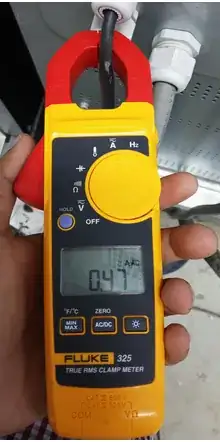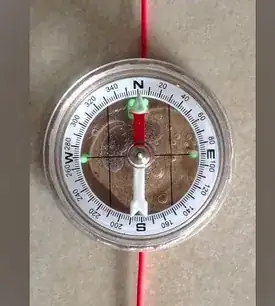If I'm not mistaken, the reversing light is on the hatch back of this vehicle, so the wire that you're looking for passes from the hatch back to the rear cabin space through the top hinge area of the hatch back.
To identify visually, you'll need to know the wire's color, which you can get from the wiring diagram. If you don't have the factory wiring diagram and can't find one online, you can buy a short term subscription to a repair data vendor such as AllDataDIY.com.
To identify electrically without cutting the wire, separate a candidate wire from the bundle and use a clamp-on ammeter around that one wire only while someone shifts into reverse with the ignition turned on.

If the current does not register on the ammeter, select a different candidate wire until you find the right one. (Image: Wikimedia Commons)
If you don't have a clamp-on ammeter and don't want to buy or borrow one, use a small compass to detect current. Any small handheld compass, even a toy compass, will work provided the needle can spin freely.

Separate a single wire from the bundle, hold the wire horizontally and place the compass directly on the wire with the compass needle pointing in the direction of wire travel and level so that the needle can spin. Have someone activate the backing lights. If the compass needle turns, that's the wire. I just tried it with a Suunto wrist compass of about 20mm diameter using a current of 0.3 amps at 13.2 (irrelevant) volts. That gave the compass needle a deflection of about 30 degrees, so it's easily observable. (Photo credit: YouTube / Stan Gibilisco)

